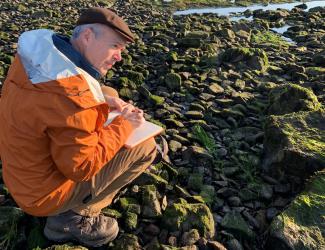NETL is part of an international team at work in Ireland to develop a project to demonstrate the feasibility of district-level hydronic heating using subsurface geothermal energy.
The project, based in Limerick, Ireland, seeks to demonstrate the effectiveness of using low-temperature geothermal heat sources on a district wide level. The effort is led by Ireland’s Micro Electricity Generation Association (MEGA), a not-for-profit research, development and incubation organization made up of communities, local authorities, research institutes and international energy companies. MEGA seeks solutions to future energy needs through microgeneration — the small-scale production of heat and/or electricity from a low carbon source.
NETL is offering technical solutions and expertise as the project team seeks to optimize the heat-extraction effectiveness in a geo-fluid loop while maintaining ecological safety as environmental benefits are assessed. The work is an example of how NETL drives innovation and delivers solutions as it partners with stakeholders.
Geothermal resources include aquifers, reservoirs and solid rock from which heat may be extracted and/or discharged. Geothermal wells, occurring at various depths ranging from only a few feet to several miles below the surface, can be drilled into underground rock formations where heat will be extracted, dissipated, or stored by circulating water or other fluids.
When heat is extracted from very low temperature resources, heat pumps are used to boost the heat to a chosen temperature range that meets the needs for a particular use. When heat pumps are used to provided cooling to buildings, the heat can be discharged to relatively cool rock and water in the subsurface where the heat is either dissipated or stored for later use.
Waste industrial and commercial heat can be stored in the subsurface for subsequent use in heating other buildings or for other purposes. High-temperature subsurface formations can be used to directly supply heat to district heating system, whereas heat pumps allow low-temperature formations to be used to supply district heating systems. Very low temperature subsurface formations can also be used cost effectively, usually through heat pumps, for district-level cooling systems.
NETL participated in the research effort’s kickoff by sending a team of researchers in the geology engineering fields. NETL’s Dan Oryshchyn, Mark McKoy, and Owen Grabowski, were on the ground in Limerick to kick-off the effort. NETL’s Rick Hammack, Yongkoo Seol, and Ali Zidane are also supporting the project.
“NETL’s part of the project focuses on developing the software tools for geothermal heat extraction, possible subsurface thermal energy storage, and river or estuary heat capture to reduce adverse temperature impacts to aquatic life, especially cold-water fisheries,” Oryshchyn said.
He said the model will be created jointly with experts at Mälardalen University in Sweden and will replicate an energy district’s behavior in an energy ecosystem, which includes a large proportion of intermittent electricity sources and various types of heat sources.
“An open-source tool arising from this model is also intended for use as a general matching tool that can present comparisons of pairings of various ground-sourcing and district-heating approaches like wind and solar,” Oryshchyn said. “We will be working to gather as much on-site information as possible and establish contacts that can later help provide relevant recorded data from geotechnical studies close to the project site.”
Oryshchyn and the NETL team joined project partners in Limerick May 23–29 to meet with local community leaders and toured areas that offer possibilities for tapping warmer river/estuary water during the summertime from which heat might be stored in the nearby subsurface to support winter-time district heating needs. The team also visited buildings and surrounding infrastructure where a pilot-level district heating system will be installed.
According to DOE, even when surface temperatures vary according to seasons, “a few feet below the Earth's surface the ground remains at a relatively constant temperature. Depending on latitude, ground temperatures range from 45°F (7°C) to 70°F (21°C). Like a cave, this ground temperature is warmer than the air above it during the winter and cooler than the air in the summer.”
The kickoff meeting also included an effort to engage Limerick area residents for two-way information exchanges focused on the goals and effects of the project.
Limerick is a major city in the Republic of Ireland set in Munster province in the south of the country. It is known for the medieval-era St. Mary’s Cathedral and St. John’s square, which is lined with Georgian townhouses, and for King John’s Castle, which is a picturesque medieval fort on the banks of the Shannon River.
NETL is a DOE national laboratory that drives innovation and delivers technological solutions for an environmentally sustainable and prosperous energy future. By using its world-class talent and research facilities, NETL is ensuring affordable, abundant, and reliable energy that drives a robust economy and national security, while developing technologies to manage carbon across the full life cycle, enabling environmental sustainability for all Americans.




